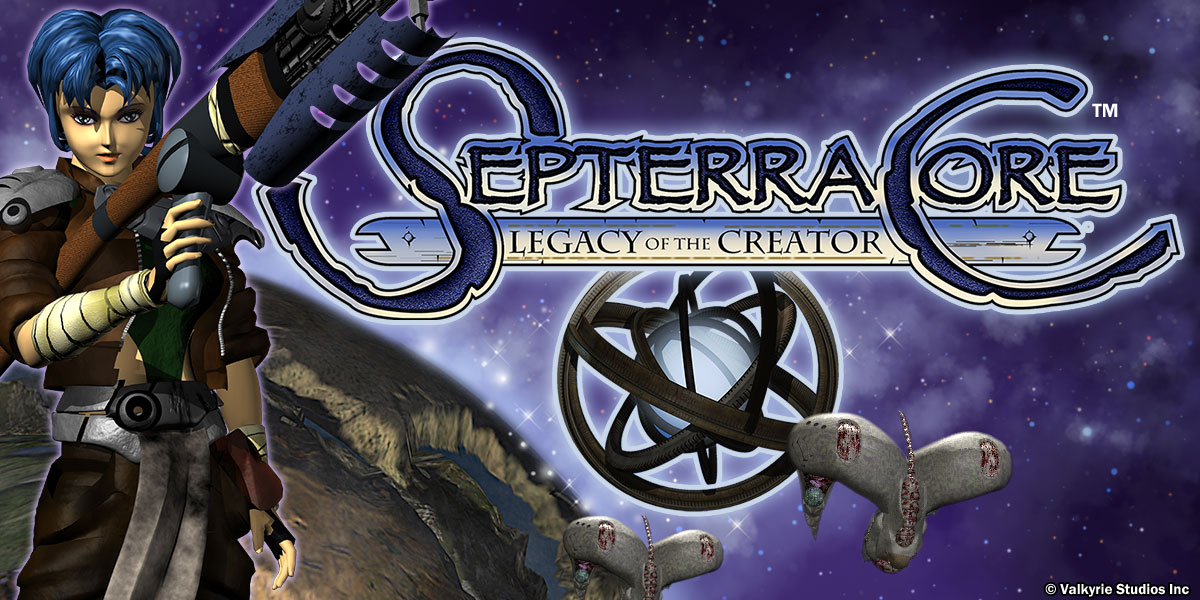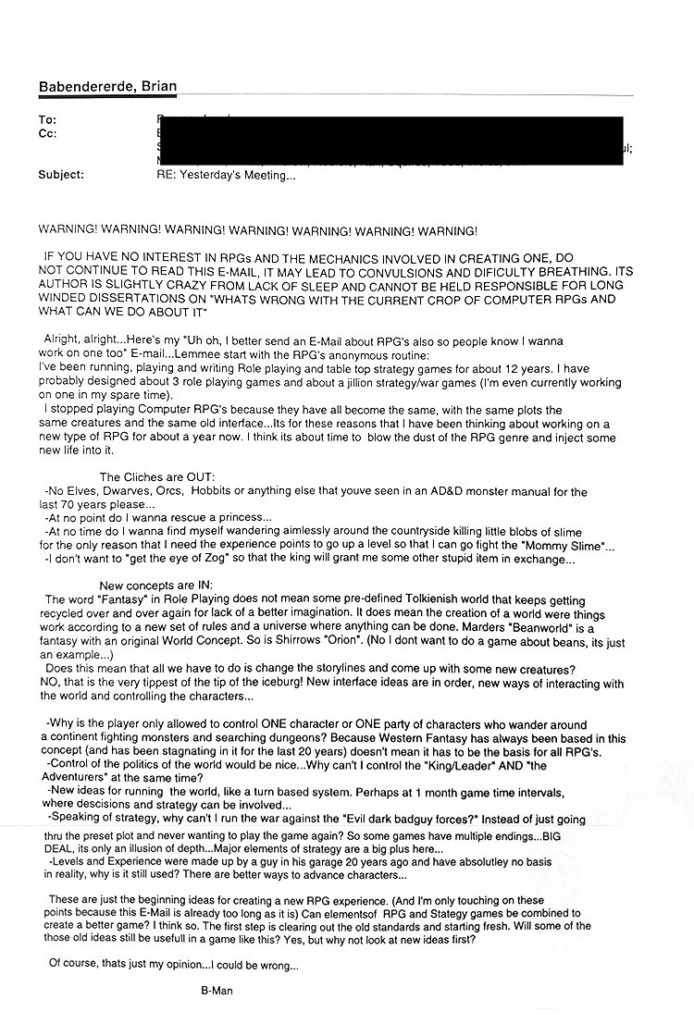The PCRPG Septerra Core: Legacy of the Creator (1999) just marked its 20th anniversary since publication! In celebration, I’ve created the first in a series of retrospective articles about the conception, design, and development of the cult classic. What lies ahead is part 01 of a deep dive into its history, based on my own memories and relics from the vault, with recollections and anecdotes from nearly the entire team. It’s my hope that hard core fans and new players alike will enjoy these behind-the-scenes details , images, and stories.
The Beavis Team circa 1995
Ah, the 90s. Everyone was wearing flannel and the music industry was trying to convince us that all this new alt rock was called “grunge” (it wasn’t). In late ’95 I was working at the Chicago-based Viacom New Media. Each development team had their own suites of offices painted in vivid “Mtv” colors, our personal spaces cluttered with toys, posters, and more toys. We were a young group of developers, but I was the youngest, with only 5 years of experience (though I already had 7 published titles to my credit.)
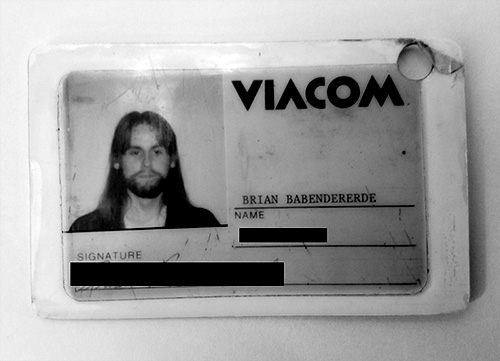
My latest project had been Lead Artist and Co-Designer / Writer on Beavis and Butt-head in Virtual Stupidity, which was winding down. Naturally, the suits began to speculate about what the future held for many of us on the team, as in, what would we work on next? So imagine my surprise when a mass email went out to the company asking if anyone was interested in working on an original Role Playing Game (RPG).
WTF? An original RPG?
This was a shock. See, Viacom New media (or VNM as the cool(?) kids called it) seemed to have only one purpose for its existence: to create games based on properties owned by the Viacom entertainment empire.
The Beavis Team (that’s what my team was known as around the office) had already had several properties suggeted to us as potential next projects. First up was The Maxx, an Mtv animated show based on the Sam Keith comic of the same name. Several of us were big fans of The Maxx, and we went down that path for a few days, brainstorming how we might take the Beavis engine and make a Maxx game with it—until we were told that although it was one of the network’s most popular shows, it was too expensive to produce and set to be cancelled. There was also an idea thrown out for a Clarissa Explains it All fighting game. You heard me: a Mortal Kombat style fighting game based on a show about a girl’s observations about teen life. Yeah, that idea didn’t get much traction.
But an original RPG? Someone in marketing had crunched some numbers and decided that the industry was in something of an “RPG Desert” in late ’95—there just weren’t that many quality RPGs coming out. This was before games like Diablo, Fallout, and Final Fantasy 7 were announced, games that would eventually flood that desert with a vengeance. So I think the VNM suits decided that this hole in the market was ripe to be filled.
Let me tell you, that email thread heated up fast. If you were interested, you had better chime in, or someone else was gonna take that opportunity and run with it. There was a bit of back and forth, with me arguing for an RPG fantasy world with a unique setting, while others countered that an RPG absolutely had to have elves, and dwarves, and magic rings.
Now, I’m a HUGE Tolkien fan—my favorite books by my favorite author. I adore Middle Earth. But there was already plenty of elves and dwarves out there. And I was tired of it—why not make something new? Fantasy has always appealed to me because it allows an author to go wild and create new worlds, so I found it boring that most fantasy just kept rehashing Tokien. Wouldn’t it be awesome to create a new world, with its own rules and internal logic, and then build a story that’s unique because it can only be told in that world?
It just so happened I had been working on a world like that. Well, sort of.
Ragna-ROCK!
When I was around 21 or so I had developed a fantasy world for a comic series that I hoped to create. I learned so much from that experience. Mostly because I failed miserably. But hey, you only learn by failing, right? I think Yoda said something like that.
Anyway, let me pitch it to you:
High school boy and his maybe-girlfriend are transported to a medieval fantasy world teeming with bio-engineered, magical technology. Boy accidentally bonds with a very important magic sword, meets an elvish cat girl who vies with the maybe-girlfriend for his affection, and finds himself in the middle of a war that will eventually bring about the destruction of the entire universe at his hand, wielding said magic sword. Oh yeah, and the characters also all play in a band… called RagnaROCK!
Who was the bad guy, you may ask? Who knows. Some faceless Dark Lord the reader would probably never see, and had no real motivation other than, “Do Evil. Get paid.”
Yeah, it was one lame trope after the other. Some sort of “Anime meets Tolkien” thing.
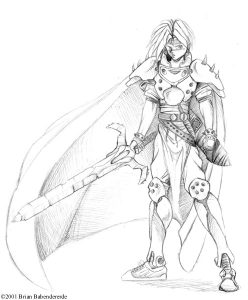
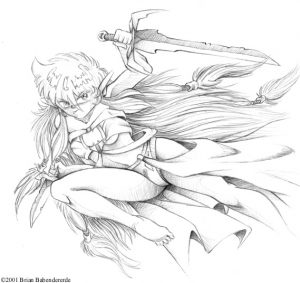
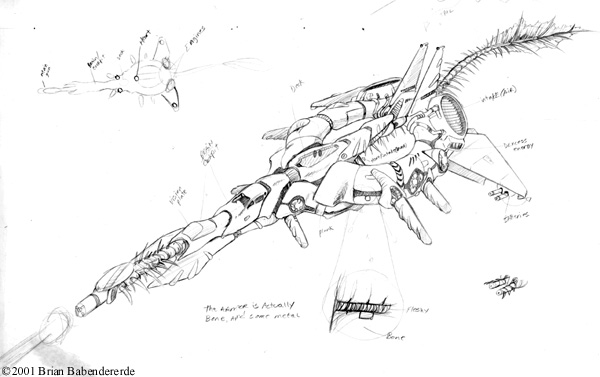
(Some of the images from Ragna-ROCK! For more, check out the Twilight Tangents vault).
But here’s the thing. Some of the ideas and world concepts were actually pretty interesting and they stuck with me: a world of floating continents, flying battleships waging war in the skies, and biomechanical technology powered by an energy that emanated from the unique physics of the world’s universe.
I still thought those ideas could be turned into something better than the mess they had come from. But what this world needed was better characters, and those characters needed a plot that was more sophisticated than, “bad guy wants to cover the world in darkness.”
Pizza Date
So one weekend I’m out to dinner at Gino’s East Pizzeria with my girlfriend, Alisa, who just so happened to be a co-developer on the Beavis Team. I told her how I’d like to take some of those ideas and re-fashion them into something for this potential RPG at work. There was a stack of plates on the table and I would hold them up and demonstrate how a world of floating continents would work.
“What’s underneath the continents,” she asked?
Now, there were also place mats with games and activities for kids—and one of those activities was a maze puzzle, one of those circles made of concentric rings just daring little Johnny to start on the outside and find the way to the center.
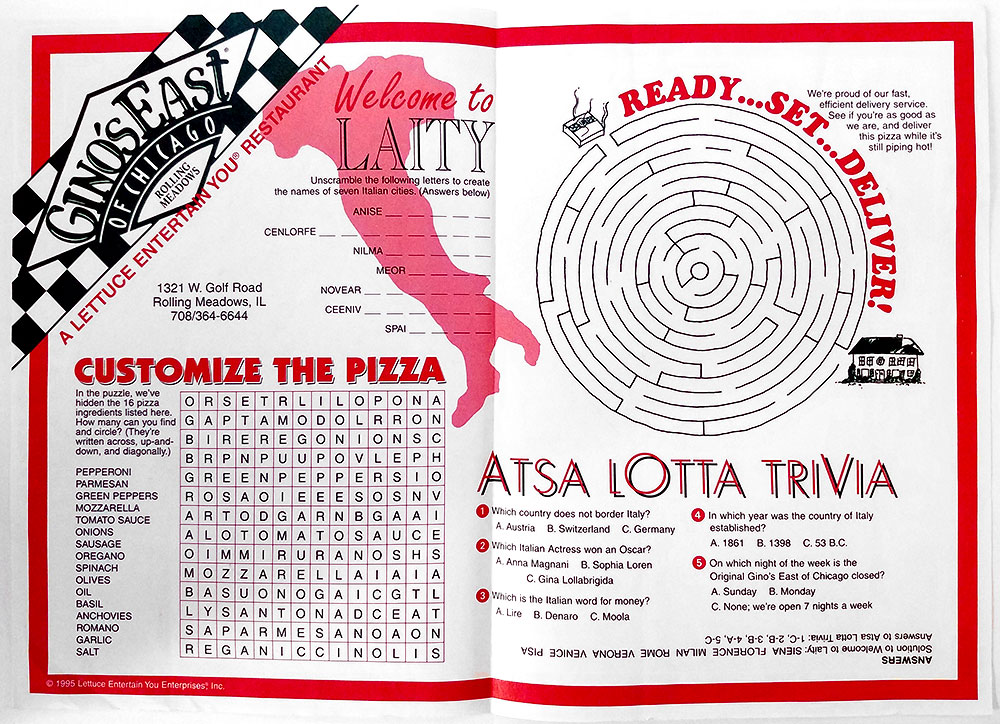
We took the plates, held one on top of the other, pointed to the maze and started saying things like: “What if underneath the continents was… MORE continents?”
Damn the waiter and his confused look as our plates were orbiting around each other—we started brainstorming right then and there around slices of deep dish!
The Titleist
Suddenly, things started to crystalize. Over the next few days I began compiling more ideas and fleshing them out. But if I was going to get the powers that be at Viacom to take a pitch seriously, I needed to raise some support at the company.
So I gathered a bunch of images that inspired me, images I could use to show the other artists and designers what I was thinking. Now-a-days we might call this a mood board, a smattering of curated images that demonstrate what your project might look like. I didn’t have a board so much as a bunch of color photocopies and art books scattered all over a conference table. I culled images from anything I could find in a world that was pretty much still pre-internet: some of my favorite art books, comics, manga, anime, and movies.
Some of the images that I pulled to illustrate Septerra Core’s “mood board.” Select each to learn more.


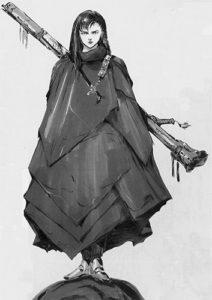




Then I invited a bunch of creatives at the office to swing by the Beavis suite one night so I could pitch this crazy idea: a world of seven concentric layers of continents, wrapped around a moon-sized core that not only regulated the rotation of the “World Shells” but was also an ancient biomechanical computer that held the secrets to the world’s past and future— and what if the main characters had to travel from the top layers of this world to the very core to unravel an ancient mystery?
The idea intrigued my gathered group! We brainstormed a bunch that evening, people tossing ideas around and encouraging me to continue fleshing out the world.
And then Jarod, one of the artists, made a suggestion: call it Septerra, the “Seven-Earth.”
I knew I wanted “Core” in the title, and there it was: Septerra Core
Now I just had to convince the suits in power to let me make it…
Oh, and also figure out how it would actually play!
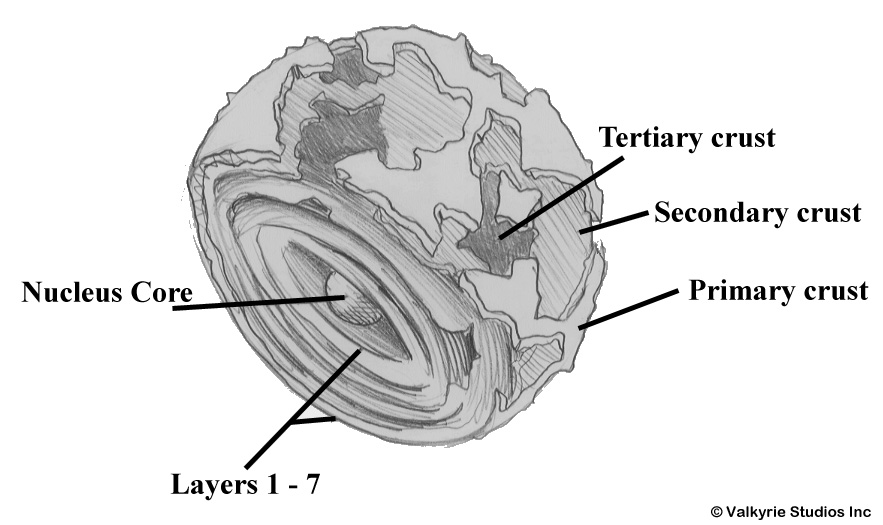
East Meets West
It wasn’t too long before I had the basic ideas for the story set out in broad strokes—not the details, but the “elevator pitch.” I knew I wanted a female lead and an interesting antagonist to pit against her, not a Dark Lord, just a man who was merely doing what he felt was right to save his world.
I wanted to get some of the higher ups on board. To demonstrate the “high level” idea, I photoshopped a concept image together from some manga and comic art, and left it taped to the art director’s office door as a tease that would hopefully get people talking.
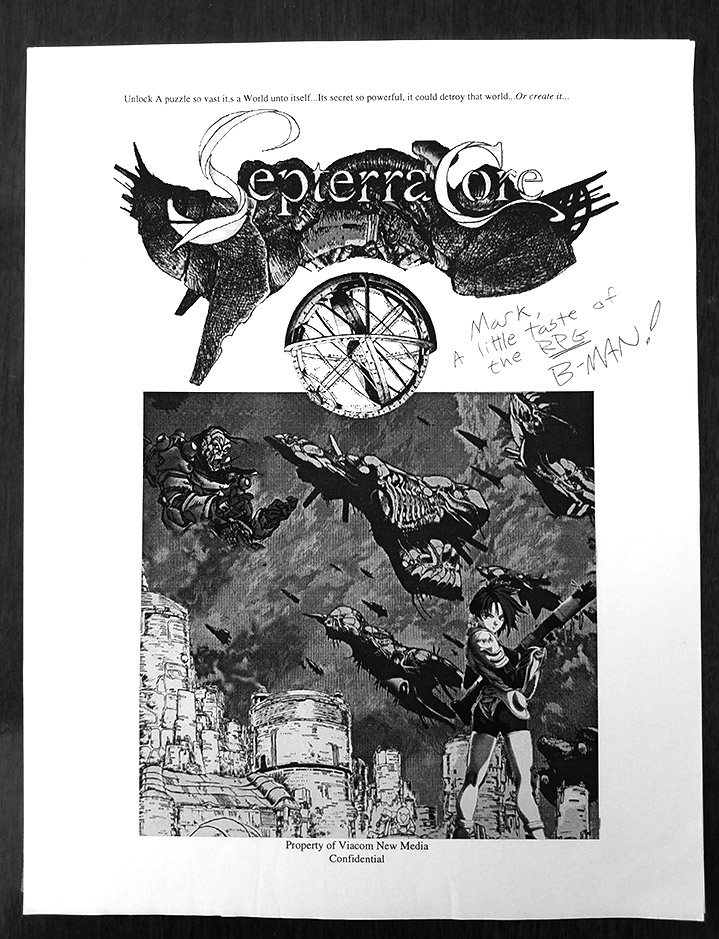
Within a few weeks I realized I had some momentum behind the concept. The suits didn’t exactly greenlight the game, but they didn’t kill it either. Maybe it was just the enthusiasm that some of us had, but they actually gave me the go ahead to put together a small team to explore and determine scope. So far it had only really been me bouncing ideas off of people, but suddenly the project had an actual producer, Cathi Court, who had lead the Beavis Team to such great success, while the talented Kathy Tootelian stepped into the role of lead artist.
“(My) earliest memory (Of Septerra Core) is of BMAN walking into my office with the first sketches of Maya and LED, a couple of the other characters and a few floating continents, and saying something like, “So, um … went to Gino’s … looked at plates … got an idea … think it might be kinda good.” Well, good is good, and it was, so I had no hesitation at all to help pitch it to Viacom management and see if we could get it done.” –Cathi Court
There was so much to do! As the game designer, there were some things I absolutely knew I wanted:
- Awarding player experience points for doing quests, not just killing monsters.
- Turn-based, chess board style combat.
- An organic health system—instead of hit points the characters would acquire wounds, giving them negative status effects that would last until they were healed.
- A day and night cycle.
- A camp system, where the party would need to pitch a little home base at night and manage their adventure: hunting for food, resting, and healing. The party might also have a random encounter with monsters or other characters while here.
- Player characters that weren’t JUST adventurers. Why not let the player also play as a king or queen and make high level political decisions that could affect the story?
- An adventure diary written by the main character, updating with story and quest beats to remind the player what to do next (this was before the days of “quest trackers”).
Yeah. None of that made it into the actual game.
But I sketched out some sample concepts for the combat. These “three-quarter top down” views were the kind of “chess board” style turn-based combat that would later become synonymous with games like the original Fallout and Final Fantasy Tactics. Ultimately we didn’t go in that direction. I remember getting a lot of push back from programming, the engineers leery of the difficulty that would allow such complex combat to take place anywhere in the world.
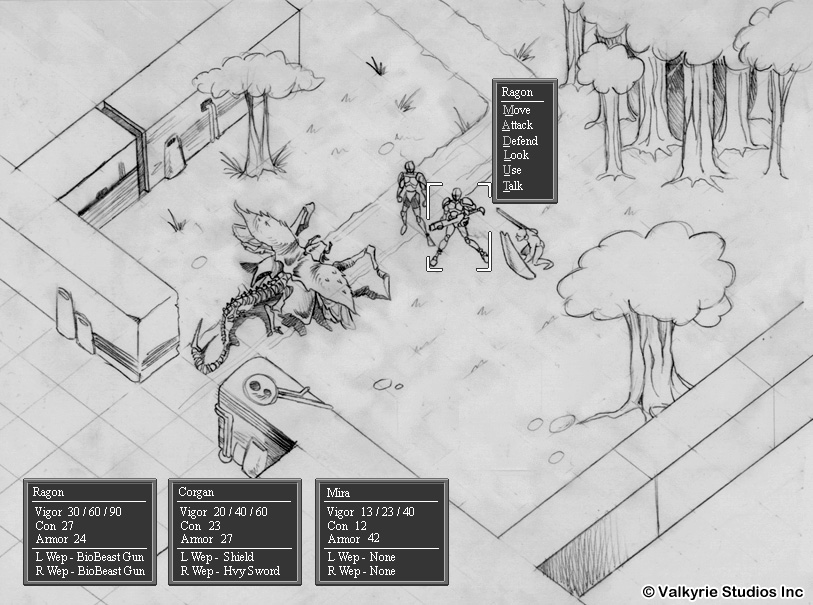
While I was fleshing out the game mechanics I was also playing a lot of competitor RPGs. Some of the more notable ones were Betrayal at Krondor, Ultima VI, Pools of Darkness, Might and Magic, Elder Scrolls II: Daggerfall, and Albion. Many of these were a few years old, owing to that “RPG desert” I mentioned earlier.
Now, as a young man I had played a lot of older PCRPGs on Commodore 64, like AD&D Pools of Radiance or Questron II. And while those games had been interesting, I had been much more captivated by games like Phantasy Star I and II on my Sega Master System and Genesis. And since I wasn’t really getting much more than elves and dwarves from the western games I was looking at in 1995, I found myself drawn back to Japanese RPGs, games like Shining Force, Albert Odyssey, Final Fantasy III (originally FFVI in Japan), Ogre Battle, and Chrono Trigger.
The vision for the game began changing. Western games often dwelled on concepts like dungeon crawling and party/camp management—things that seemed more in line with a simulation of the table top experience of Advanced Dungeon & Dragons. Septerra Core would be more like a JRPG: story based with an emphasis on characters, plot, and the struggle between a strong protagonist and an antagonist. Combat wouldn’t be highly tactical in terms of moving chess pieces, but faster paced, with less management, allowing the player to form strategies by exploiting the enemy’s behavior and weaknesses with their character’s own unique skills. And in order to allow the player to focus on the story and exploration of the world, the game would borrow heavily from adventure games, with intuitive “point and click” item management and exploration tools similar to what we had innovated on for Beavis and Butt-head in Virtual Stupidity.
Everything was starting to gel, and the team was about to grow, but we’d soon learn that, if Septerra Core was ever to see the light of day, it would have to fight for its very existence.
PART 2 : Convincing the suits that this strange, new world was one worth exploring.

